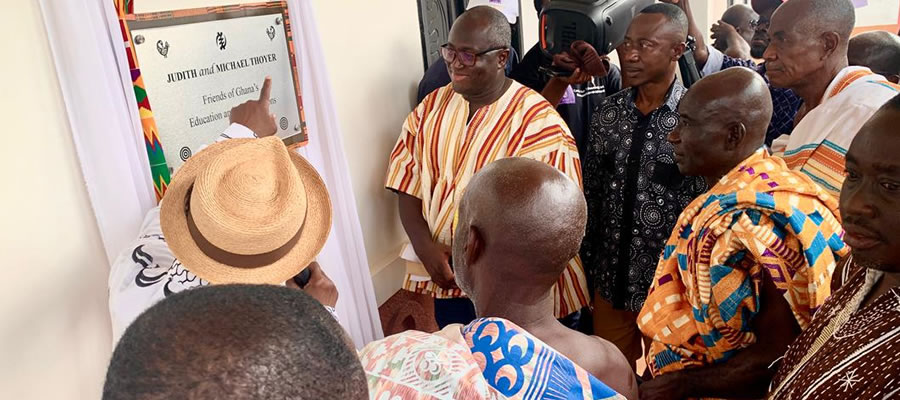

The District Economy
The Local Econom
Table 2.21 shows the economic status of the population 15 years and older in the district. About 72.8 percent are economically active and 27.2 percent are economically not active. Among the economically active population, 96.8 percent are employed and 3.2 percent are unemployed.
Among males, a higher proportion (73.4%) is economically active than the proportion among females (72.3%). And among the economically active males, a higher proportion (97.4%) are employed compared to the proportion among females (96.3%).
Among the economically not active population, 46.4 percent are in full time education while the pensioners/retired forms the least proportion (2.1%). The majority of the economically not active population among the males (59.3%) is in full time education compared to 36.5 percent of their female counterparts. Higher proportions among the economically not active females do home duties (26.5%) and are too old/young (19.5%) to work than their male counterparts (13.9% and 8.1%, respectively). Among the unemployed, 64.2 percent are seeking for work for the first.
Table 1.36 shows economic activity status by age group and sex in the district. The proportion of the population employed is lowest among the 15-19 years age group (28.3%) and increases steadily with age to a high of 93.3 percent among the 45-49 years age group and declines steadily to 57.4 percent among the 65 years and older age group. This is not surprising as majority of persons within the age group 15-24 years are in school and therefore not working. The trend in proportion rises steadily with advancing age, peaks at 45-49 years and declines also steadily. There is no marked variation between males and females except that the peaks are at different age groups: males at 45-49 years and females at 40-44 years.
The proportion of the economically not active population decreases steadily from 69.1 percent among the 15-19 years age group to a low of 6.0 percent among the 45-49 years age group and increases steadily to 42.2 percent among the 65 and older age group.
The trends in proportions of the economically not active in the age groups among males and females are slightly different. Among males, the proportion is lowest among the 35-39 years age group (4.2%), increases to 6.4 percent among the 40-44 years age group, decreases to 4.8 percent among the 45-49 years age group and then increases steadily to 35.7 percent among the 65 and older years group. Among females, the trend is similar to that of the district except that the lowest proportion is among the 40-44 years age group and increases steadily.
Occupation
Occupation refers to the type of work a person is engaged in at the establishment where he or she is employed. The occupation of the people is very important when it comes to economic activities and this section covers the employed population categorized in their respective occupations. Table 1.37 shows occupation of employed population in the district.
The major occupation is skilled agriculture, forestry and fishery accounting for 61.9 of the employed population. This is followed by the service and sales workers (14.2%) and craft and related trades (10.4%). The least occupation is clerical support (0.7%), followed by technicians and associate professionals (1.0%) and managers (1.3%). In all other occupations, the proportions among employed males are higher than the proportions among employed females.
However, females who engaged in service and sales occupation (21.6%) and managers (1.5%) are higher than the proportions among employed males (5.2% and 1.1%) respectively.
Major Economic Activities
The main economic activities in the district centers on farming, small scale processing of agriculture produce, trades like hair dressing, tailoring, carpentry, service and others.
A. Agriculture
About 61.9 percent of total active labour force in the district is engaged in agricultural production as indicated earlier. The farmers are into both food and cash crops farming. The structure of agriculture in the district is peasant in nature and the farmers rely on traditional labour intensive method of production and the weather. Livestock and poultry production is done on small scale at times under free range system.
1. Crops Production
The district has a total cultivable land of about 40,360hac (as at 2013). Out of this figure only 26,566.90 hectares representing 65.82 percent is under cultivation. This means that about 34.1 percent (13,793.1 hectares) of land is uncultivated. For the district to derive its full potential in the agricultural sector there is the need to put in place sufficient mechanisms to address these issues. Information available also indicates that the average farm size in the district as at 2013 is 0.7 hectares with an average farm distance of 3.0 kilometers which is quite far.
Major food crops grown by farmers are maize, cassava, plantain, cocoyam and yam. Cash crops are grown on a smaller scale in the district. Some of these cash crops include cocoa, rice, and palm nut. Vegetables such as tomatoes, garden eggs, pepper and onions are also cultivated. Table 2.27 below shows the production levels of some of the major crops in the district.
Certain farming practices are adopted by farmers in the production of the above mentioned crops. These farming practices include mixed farming, mixed cropping, mono cropping and crop rotation.
Information from MOFA indicates that mixed cropping is the predominant farming practice in the district. About 68 percent of the farmers practicing adopt this method. This can be attributed to the advantages derived from the practice such as the assurance of food security in case of failure of one particular crop. The information further reveals that agro forestry however, is not encouraging and need to be encouraged in the district to maintain the forest reserves and good environment. There is therefore the need to formulate policies that will encourage farmers to go into agro forestry.
Table 2.28 below throws more light on the type of farming practices in the district and the percentage of farmers that adopt a particular practice.
Livestock Productions
The major livestock productions in the district are poultry, sheep, goat, cattle, rabbit, grass-cutter and pigs. This agricultural sub-sector of the district is not well developed. This is due to the substantial amount of capital required for investment. Farmers in this sector therefore operate on a smaller scale. For instance, the total number of commercial poultry farms in the district in 2009 was 20. Certain interventions such as provision of credit facilities and subsidies among others should be put in place to absorb more investment into this particular sub-sector since it is a very high potential for growth in the district.
A. Extension Services
There are 9 Extension Service Officers in the district. This implies that the extension service to farmer ratio in the district is 1:3866. This is not encouraging as compared to the national ratio of 1:1500. There is urgent need for more and effective Extension Service Officers in order to address this situation.
Major Problems of the Agricultural Sector
The major problems confronting the agricultural sector in the district are bulleted below;
• Poor road network, especially in the Afram basin.
• Low price for farm produce.
• Lack of credit facilities for farmers.
• Lack of appropriate agro-processing machinery.
• Inadequate water for domestic and agricultural purposes.
• Low extension farmer ratio.
• Lack of storage facilities.
• Lack of transport for agricultural technical staff.
• Erratic rainfall pattern.
• Low adoption of agricultural technologies by farmers.
• Late reportage of animal ill health.
• Untimely funding of agricultural activities.
• Low level irrigation development.
• Misuse of agro-chemicals by farmers.
• Poor linkage of farmers to buyers, processors and other stakeholders.
B. Commerce and Service
This sector of the district both employs about 21.6 percent of the active labour force. Major activities under this sector of the district economy is trading, banking and teaching. Trading activities in the district is mainly retail with wide range of goods and services including both imported and made-in-Ghana goods, second hand clothing and foot ware.
There is 1 hotel and 2 guest houses operating in the district. They are Manhattan hotel, located in Kumawu, No. 10 Downing Street Guest House at Nkwanta and Dankari Guest House located in Besoro. Traditional caterers, restaurants operators, drinking bars, petrol dumps and postal services are also available in some towns such as Kumawu, Bodomase, Oyoko, Banko etc.
Financial services are also provided by two rural banks namely Asokore Rural Bank and Kumawuman Rural Bank. These two banks have branches and agencies in Kumawu, Dadease, Bodomase and others. Other economic activities undertaken by the people are tailoring, dress-making and hairdressing.
C. Manufacturing/Industry
This sector of the district economy employs about 13.1 percent of the labour force. Despite abundance of agricultural raw materials, the district cannot boast of any major processing industry. However few cottage industries such as palm oil, palm kennel oil extraction, soap making, shoe making, batik tie and dye pottery, carpentry, blacksmithing and ‘kente’ weaving exist in some communities. A considerable amount of clay deposits are found at Woraso. Sand winning activities are also wide spread in the district. Some of the areas noted for these activities are Sekyere, Asekyerewa, Akrofoso, Woraso and Banko.
Poverty and Income Levels in the District
Poverty manifests itself in the district in a greater proportion according to District poverty profiling and mapping conducted in 2004 by the mother district, Sekyere East. With exception of few urban centres, most communities in the district have either less or no access to water and sanitation facilities.
Revenue and Expenditure Status of the District
The Assembly obtains funds for its operation from the following sources:
1. District Assemblies’ Common Fund
2. District Development Facility (DDF)
3. Internally Generated Fund (Traditional Revenue) i.e Rates, lands, Fees and Funds, Licenses, etc.
4. UNFPA/GSOP
The Assembly has accounts with the Kumawuman Rural Bank, Kumawu Branch and National Investment Bank, Adum Branch (in respect of relevant programmes and projects).
The District Co-ordinating Director and the District Finance Officer are the signatories to both accounts.
The main sources of income to the Assembly, however, are the Internally Generated Fund (IGF) and Government Grants. The IGF is made up of rates, lands fees and fines, licenses, rates investment and miscellaneous.
Internally Generated Funds (2014-2017)
The Local Government Act, (Act 462) enjoins District Assemblies to levy sufficient rates to provide for part of its total expenditure. Sekyere Kumawu District is not an exception. In addition to the District Assemblies’ Common Fund (DACF), the district also generates revenue internally for its developmental programmes and projects. The Assembly raised GHC
1,229,271.02 during the plan period.
Revenue Base
The Assembly performs numerous functions that requires fund .As a result,it has been authorized and mandated to raise revenue internally to cater for its expenditure requirement to supplement the District Assemblies Commonfund .The major source of the IGF are the following;
• Rates
• Lands
• Fees/fines
• Investment
External Sources
Central Government Grants and the interventions from external donors constitute the external sources of the Assembly. The grants include the District Assemblies’ Common Fund (DACF), the Ceded Revenue and the Reimbursements (salaries/wages). The interventions are made up of the District Development Fund, Ghana Education Trust Fund (GETFUND) and others.
The external source of revenue is the major and highest source for development in the District as almost all development programmes/projects are funded from it.
Expenditure/Prudent Fiscal Management
In the case of expenditure from the Internally Generated Fund (IGF), the Assembly complies with all the financial regulations governing expenditure with Public Funds. The following measures are put in place:
1. Expenditure are incurred in accordance with the Rules and Regulations governing the operations of District Assemblies. These are the Financial Administration Act, 2003 (Act 654), Public Procurement Act, 2003 (Act 663), Internal Audit Agency Act 2003 (Act 658), Financial Administration Regulation (FAR) of 1979,(L.I 1234), Financial administration Decree (FAD) of 1979 (SMCD 221), Financial Memorandum of Local Government Act 54 of 1961 and the Local Government of Act 1993 (Act 462).
2. Although the Expenditure are incurred in accordance with the above stated Rules and Regulations, the assembly also has its own internal control systems in place for proper financial management. All claims and expenditure are addressed to the District Chief Executive through the District Coordinating Director. However, claims with smaller values below One Hundred Cedis (GH¢100.00), especially those which are of routine nature, are authorized by the District Coordinating Director for payment.
After approval by the District Chief Executive or the District Coordinating Director, the claim is sent to the District Finance Officer who prepares Payment Vouchers and sent to the Internal Auditor for pre-auditing. After satisfying himself of the payment vouchers appropriateness, the Internal Auditor passes the Payment voucher for the cheque to be written which is receipted by the recipients and all store items are routed through the stores for proper documentations and taken in custody after delivery.
3. In the case of development Programmes and Projects, all procedures stated in the Tender Board Regulations (L.I 1616) and the new procurement Act of 2003 (Act 663) are strictly complied with in awarding contracts.
4. It is worthy of note that before the beginning of each Financial Year, Revenue and Expenditure Estimates are prepared and approved by the General Assembly and signed by the Presiding Member and the District Coordinating Director to guide the Administration in the Revenue Collection and the direction of Expenditure. Before the Estimates are prepared, Fee Fixing Resolutions are prepared and approved by the General Assembly and Gazette.
5. In addition to this, Supplementary Estimates for the utilization of the District Assemblies’ Common Fund are also prepared and approved by the General Assembly in the course of the year, using the Guidelines provided by the Ministry of Local Government and Rural Development. The Common Fund Budgets are signed by the Presiding Member, the District Coordinating Director and the District Chief Executive and duly endorsed by the Ashanti Regional Coordinating Council before implementation.
Date Created : 11/28/2017 3:55:25 AM











 facebook
facebook
 twitter
twitter
 Youtube
Youtube
 +233 593 831 280
+233 593 831 280 0800 430 430
0800 430 430 GPS: GE-231-4383
GPS: GE-231-4383 info@ghanadistricts.com
info@ghanadistricts.com Box GP1044, Accra, Ghana
Box GP1044, Accra, Ghana